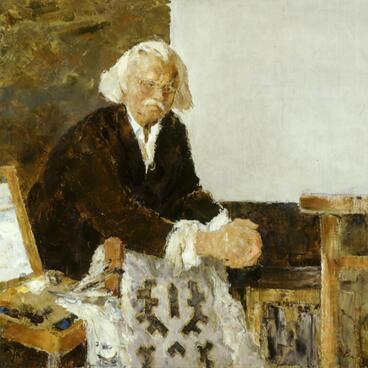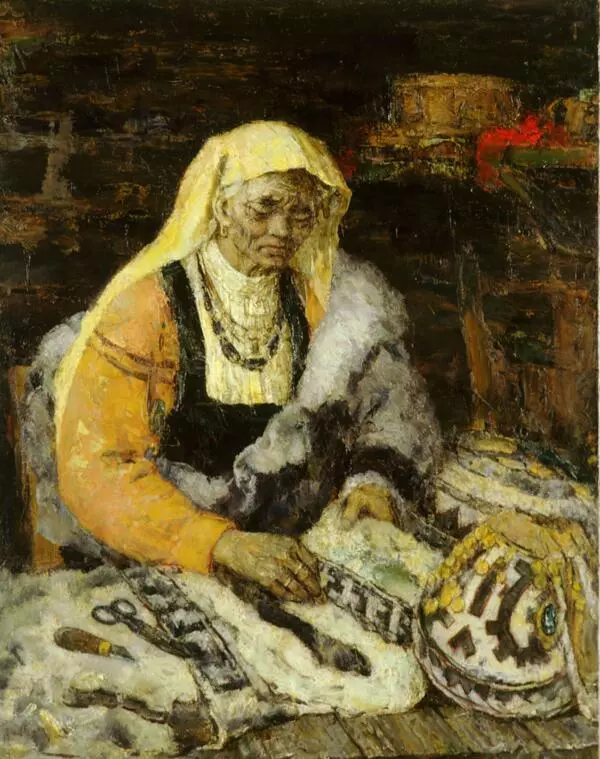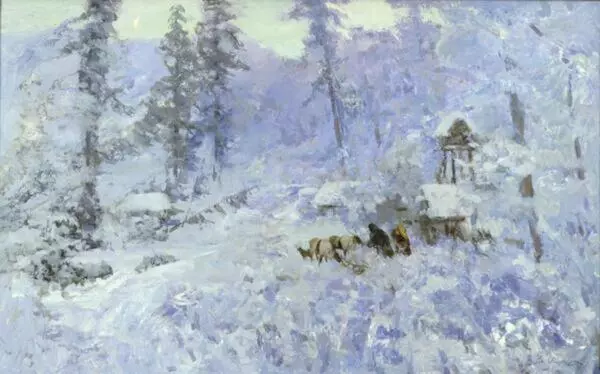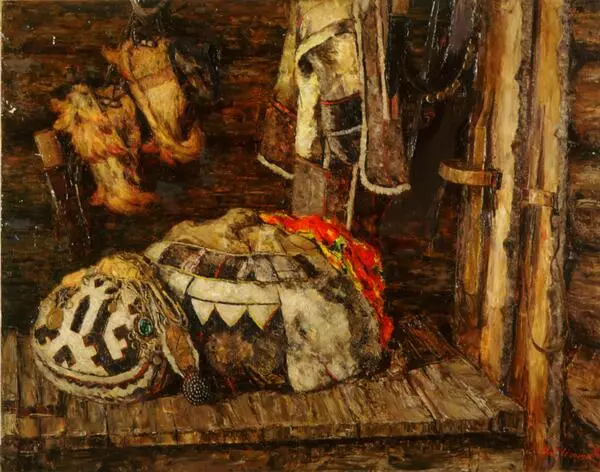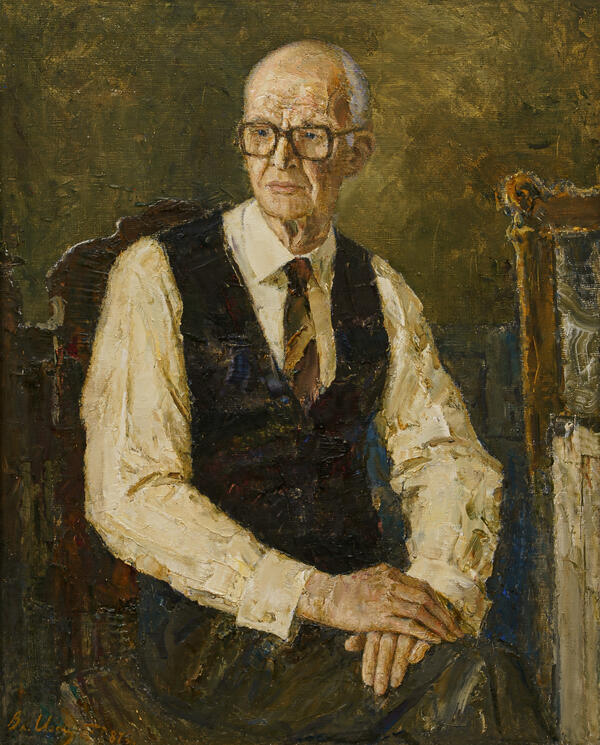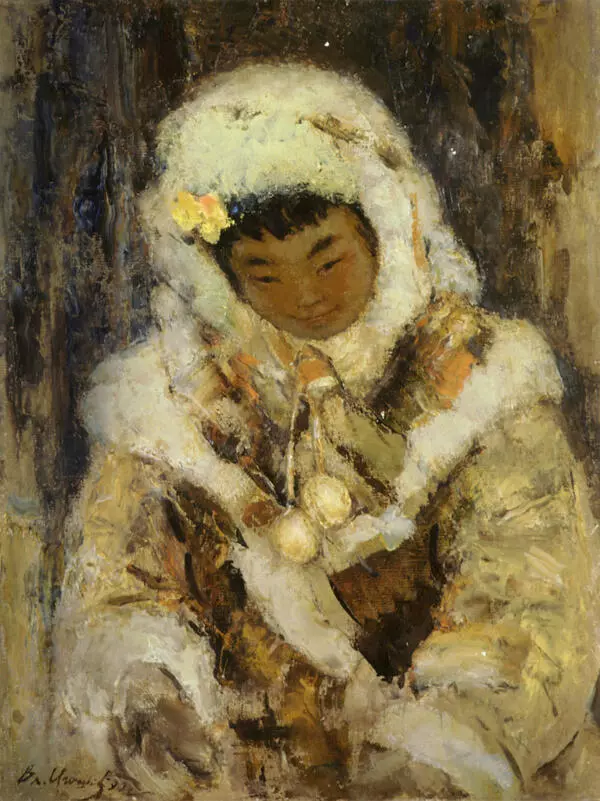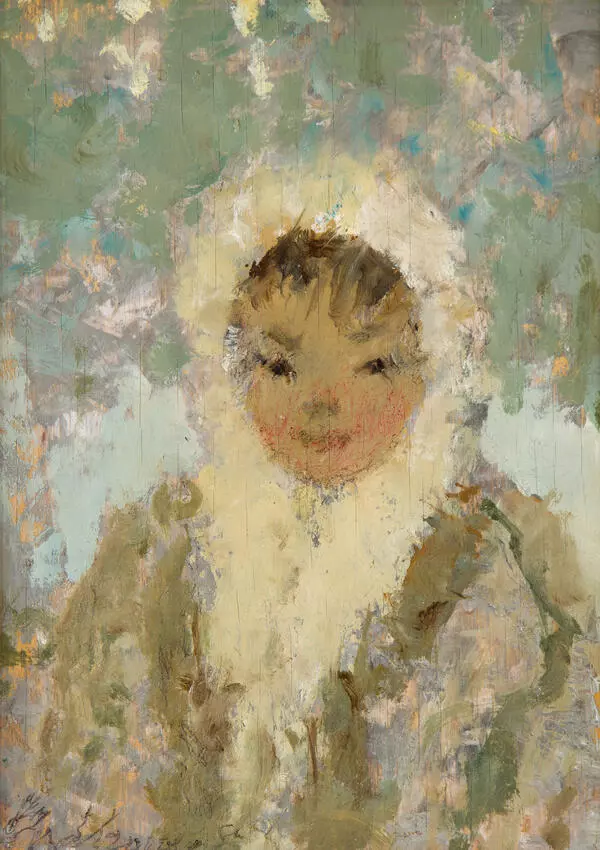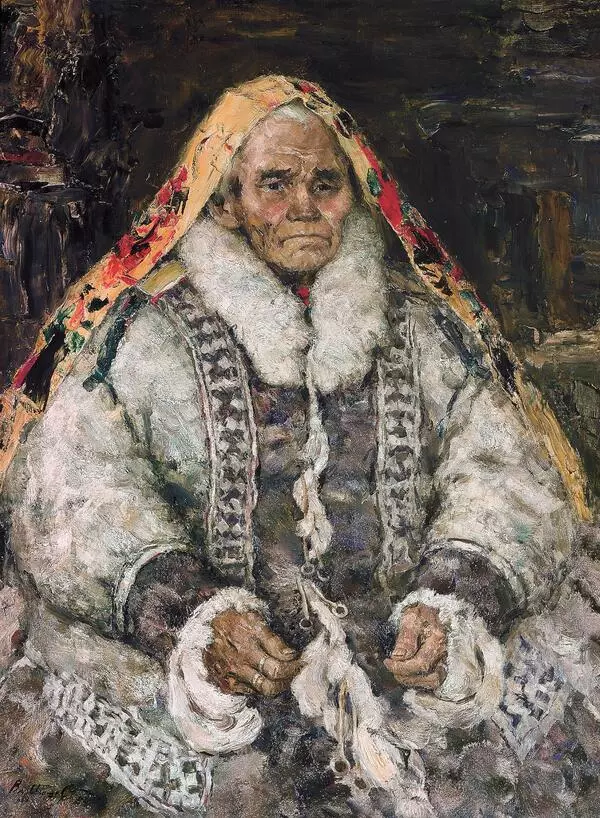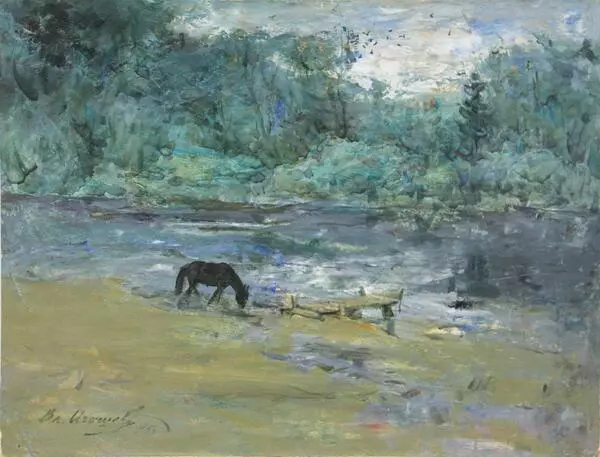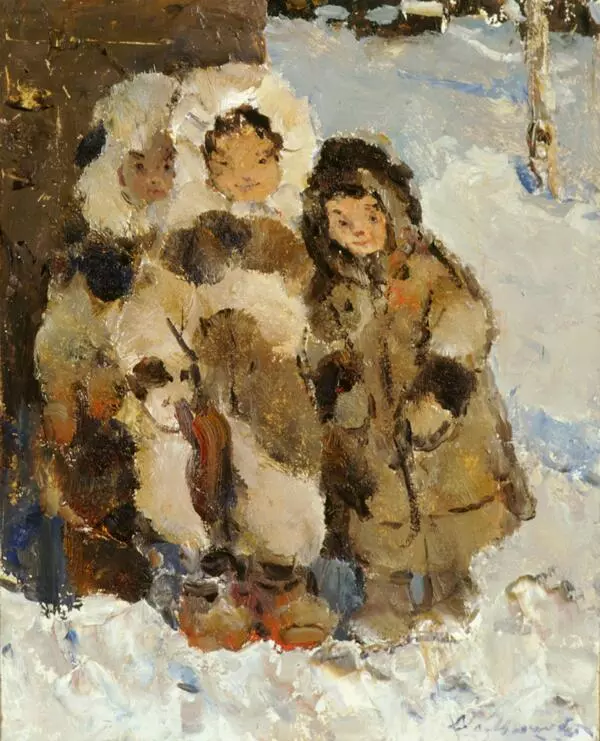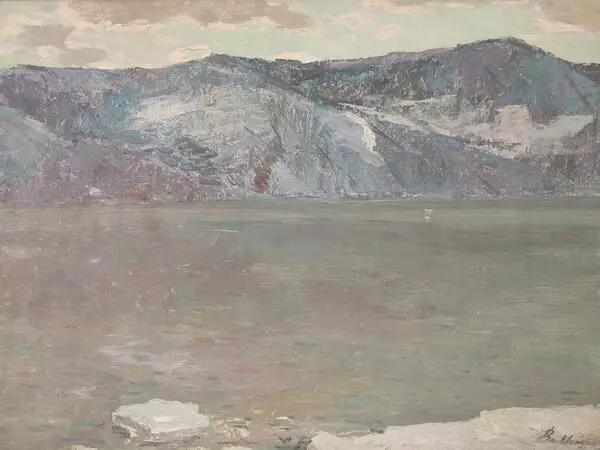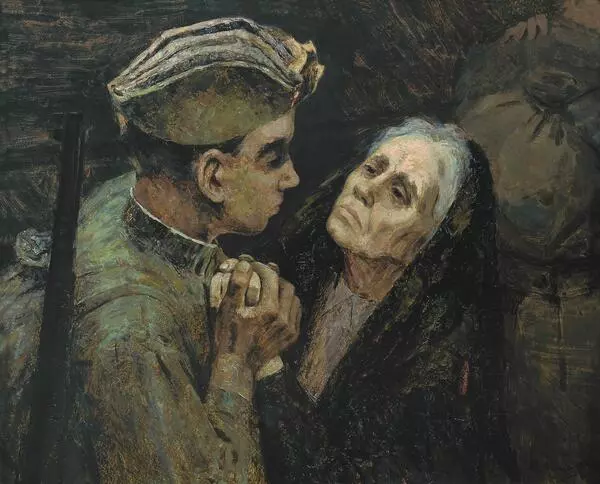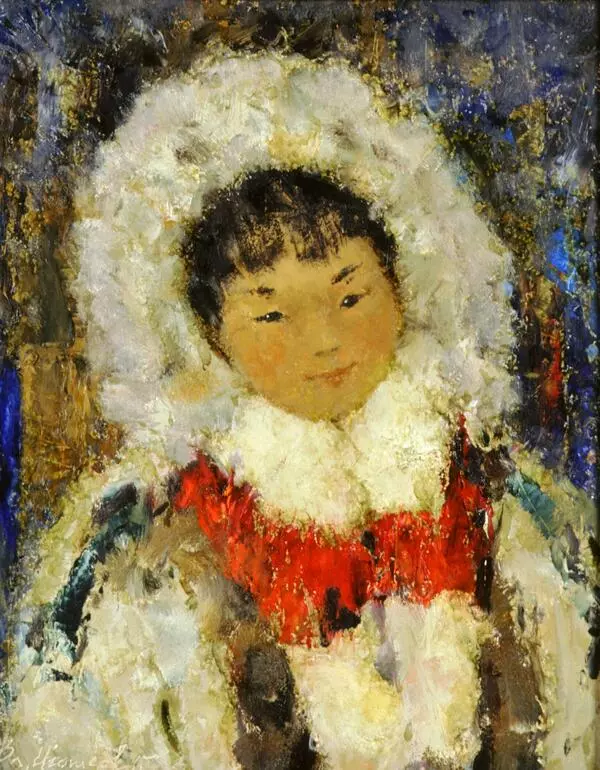Vladimir Igoshev was born in Bashkiria. He got his basic art education in Ufa, and in 1950 he graduated from The Surikov Art Institute in Moscow. In 1954 the artist first went to Khanty-Mansi Autonomous Okrug. There he explored the local traditions. Impressed by the beauty of the northern region and its heroic inhabitants, Igoshev created Suevat-Paul, Stepan Kurikov and other paintings, accepted to the All-Union Art Exhibition in Moscow. The artist became famous for his landscapes and portraits dedicated to the people and nature of Khanty-Mansi Autonomour Okrug. In two years his solo exhibition was organized in Moscow.
In this portrait Igoshev depicted Andrey Nomin, a man from the Sosva Mansi ethnic group. The artist recalled: ‘I remember many of my models not just by their names; with many of them I am connected by friendship for the rest of our lives. In our friendship the intimacy is way more important than the frequent meetings and short distances.’
The peoples of the North started to use the modern names, surnames and patronyms in the late 18th century after their Christianization. Before the arrival of Russians Khanty and Mansi only had first names. The surnames of the peoples of North, just like the Russian ones, derived from the first names of their relatives and were based on the national names. At first they were transformed into patronyms and then into the surnames. At the moment such last names as Algadyev, Anemgurov and Nomin are widespread here.
Fishery and hunting are the main Mansi industries. Mansi living on the Severnaya Sosva were reindeer breeders. During the cold season the people lived in the permanent villages. In summer the Mansi, whose main work was reindeer breeding, lived in yurts in the foothills of the Urals. The Sosva Mansi lived in the blockhouses and other ground based dwellings. They mostly consumed animal-based food. Their clothing was also specific. In the upper reaches of the river the clothes made of buckskin were widespread, while in the lower reaches buckskin wasn’t used for making clothes.
In this portrait Igoshev depicted Andrey Nomin, a man from the Sosva Mansi ethnic group. The artist recalled: ‘I remember many of my models not just by their names; with many of them I am connected by friendship for the rest of our lives. In our friendship the intimacy is way more important than the frequent meetings and short distances.’
The peoples of the North started to use the modern names, surnames and patronyms in the late 18th century after their Christianization. Before the arrival of Russians Khanty and Mansi only had first names. The surnames of the peoples of North, just like the Russian ones, derived from the first names of their relatives and were based on the national names. At first they were transformed into patronyms and then into the surnames. At the moment such last names as Algadyev, Anemgurov and Nomin are widespread here.
Fishery and hunting are the main Mansi industries. Mansi living on the Severnaya Sosva were reindeer breeders. During the cold season the people lived in the permanent villages. In summer the Mansi, whose main work was reindeer breeding, lived in yurts in the foothills of the Urals. The Sosva Mansi lived in the blockhouses and other ground based dwellings. They mostly consumed animal-based food. Their clothing was also specific. In the upper reaches of the river the clothes made of buckskin were widespread, while in the lower reaches buckskin wasn’t used for making clothes.


